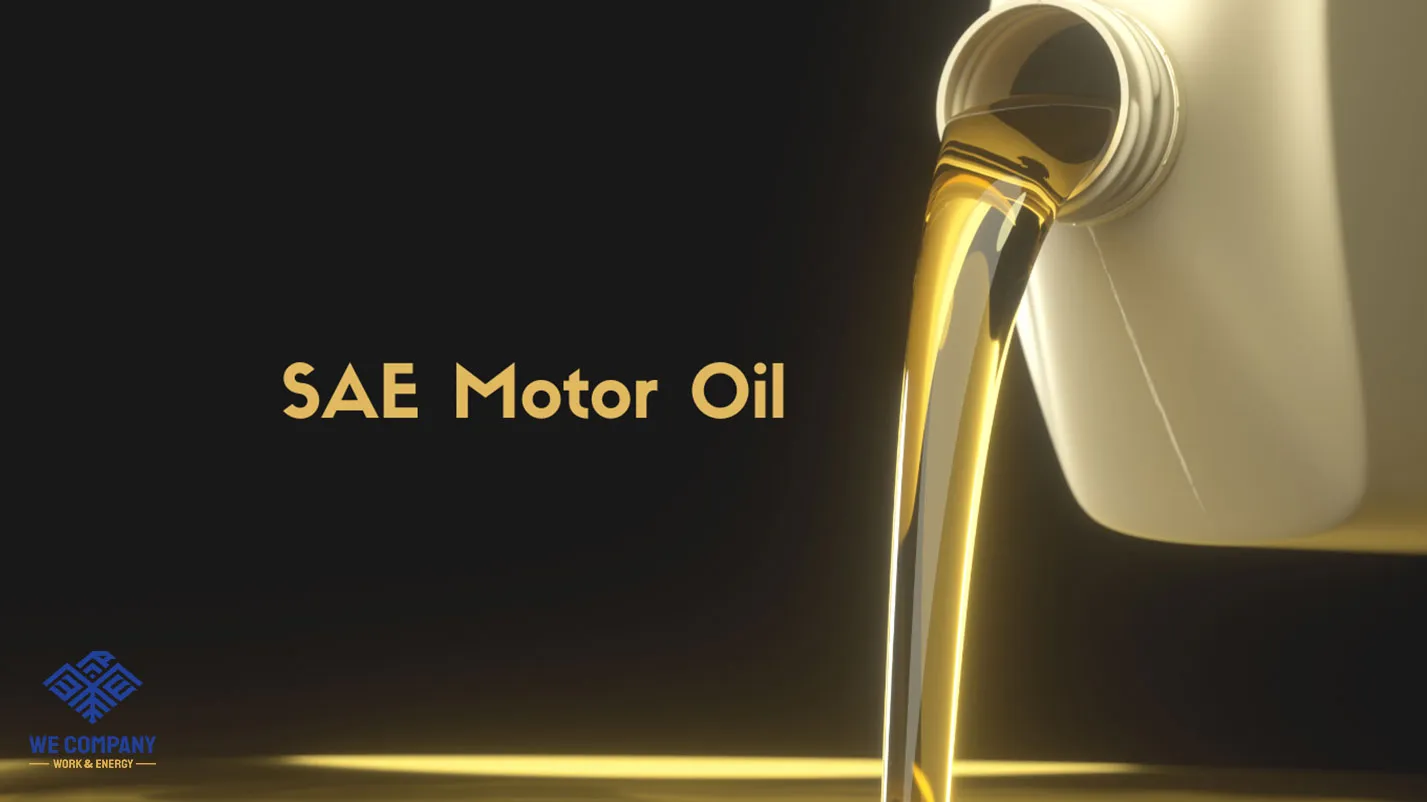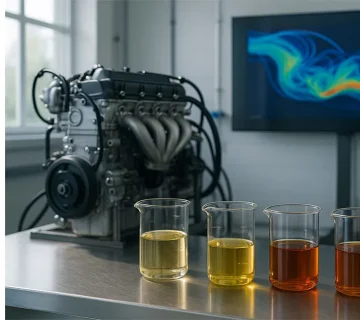Understanding SAE Motor Oil: Meaning and Importance
Motor oil is essential for the efficient operation and longevity of engines. One of the most commonly used classifications for motor oils is the SAE (Society of Automotive Engineers) rating, which defines oil viscosity. Understanding SAE motor oil specifications is crucial in choosing the right oil for your vehicle’s engine performance and longevity.
What Does SAE Motor Oil Mean?
The SAE grading system categorizes motor oils based on viscosity, which is their resistance to flow. The letters “SAE” always precede the oil viscosity rating on motor oil labels. Originally, SAE ratings were monograde, meaning they had a single viscosity rating such as SAE 30, SAE 40, or SAE 50. However, in the 1950s, multigrade oils were introduced, allowing for better engine performance across different temperature conditions.
For example, SAE 5W-30 and SAE 10W-40 are common multigrade motor oils. The “W” in the viscosity rating stands for Winter, and the number before it indicates how well the oil flows at 0 degrees Fahrenheit (-18°C). A lower number means better cold-weather performance. The number after the “W” represents the oil’s viscosity at 212 degrees Fahrenheit (100°C), showing how well the oil maintains its protective properties at high temperatures.
SAE Motor Oil Specifications & Performance
WE Company offers high-quality SAE motor oils in various grades for different applications. Below are the specifications for our SAE motor oils:
SAE Motor Oil Specifications
| Specification | Test Method | SAE 30 | SAE 40 | SAE 50 | SAE 25W-50 |
|---|---|---|---|---|---|
| Kinematic Viscosity @ 100°C (cSt) | ASTM D-445 | 12 | 15.5 | 18 | 20 |
| Viscosity Index | ASTM D-2270 | 85 | 85 | 90 | 115 |
| Pour Point (°C) | ASTM D-97 | -18 | -9 | -9 | -21 |
| Flash Point (COC) (°C) | ASTM D-92 | 226 | 240 | 246 | 240 |
| Density @ 15°C (Kg/m³) | ASTM D-4052 | 892 | 905 | 906 | 898 |
| Total Base Number (mgKOH/g) | ASTM D-2896 | 4.1 | 4.1 | 4.1 | 7.5 |
Choosing the Right SAE Motor Oil
Selecting the right SAE motor oil depends on factors such as engine type, climate conditions, and vehicle usage. Monograde oils like SAE 30, SAE 40, and SAE 50 are best suited for older engines, farm equipment, and some industrial applications. Multigrade oils like SAE 25W-50 offer better performance across temperature variations and are ideal for modern engines that require protection in both cold and hot climates.
Applications of SAE Motor Oil
WE Company supplies SAE motor oils in various volumes and customized packaging to meet industry needs. Our mineral-based SAE motor oil offers reliable lubrication and is widely used in:
- Gasoline and diesel engines for cars, heavy vehicles, and farm equipment
- Commercial vehicle and contractor equipment lubrication
- Gear and hydraulic applications
SAE motor oil is known for its strong adhesive properties, which help form an oil mist during operation to lubricate areas not directly reached by splash lubrication. This characteristic ensures excellent emergency lubrication for engines operating under demanding conditions.
Conclusion
Understanding SAE motor oil viscosity and selecting the right grade can significantly improve your engine’s efficiency and lifespan. Whether you need monograde or multigrade motor oils, WE Company provides premium-quality SAE motor oils tailored to your needs. Contact us today to find the right oil solution for your business or vehicle!
Top 10 Frequently Asked Questions (FAQs)
1. What does SAE stand for in motor oil?
SAE stands for Society of Automotive Engineers, which sets viscosity standards for motor oils.
2. What is the difference between SAE 30 and SAE 40 motor oil?
SAE 30 has a lower viscosity than SAE 40, making it more fluid at high temperatures, while SAE 40 provides thicker lubrication.
3. What does the ‘W’ in SAE 10W-40 mean?
The ‘W’ stands for Winter, indicating how well the oil performs at cold temperatures.
4. Is multigrade oil better than monograde oil?
Multigrade oils provide better performance across varying temperatures, making them ideal for modern engines.
5. Can I use SAE 50 oil in my car?
SAE 50 is typically used for heavy-duty engines and industrial applications rather than standard passenger vehicles.
6. What is the viscosity index of SAE motor oil?
The viscosity index indicates how much the oil’s viscosity changes with temperature. Higher values mean more stable performance across temperatures.
7. Why is total base number (TBN) important in motor oil?
TBN measures the oil’s ability to neutralize acids and protect against corrosion, ensuring longer engine life.
8. How often should SAE motor oil be changed?
Oil change intervals depend on engine type, oil grade, and driving conditions, but typically range from 3,000 to 10,000 miles.
9. Can SAE motor oil be used in diesel engines?
Yes, many SAE motor oils are formulated for both gasoline and diesel engines.
10. Where can I buy high-quality SAE motor oil?
WE Company provides premium SAE motor oils in various grades with customized packaging for different applications.
Suggested content:
SAE motor oil
Contact Us
Need help selecting the right base oil or want to request a quote? We’re here to assist you.
WhatsApp: (+971) 585992028
Phone: (+971) 58 599 20 28
Email: info@workandenergy.com
Office Address: No. 106, Sabkha Tower, Deira, Dubai, UAE



No comment